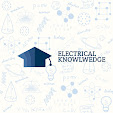MAGNET [MAGNETISM]
MAGNETISM
MAGNETISM
Electric currents and magnetic fields are closely related.
Whenever an electric current flows—that is, when
charge carriers move—a magnetic field accompanies the current. In a straight
wire, the magnetic lines of flux surround the wire in circles, with the
wire at the center. Actually, these aren’t really lines or circles; this is
just a convenient way to represent the magnetic field. You might sometimes hear
of a certain number of flux lines per unit cross-sectional area, such as 100
lines per square centimeter. This is a relative way of talking about the intensity
of the magnetic field.
Magnetic fields can be produced when the atoms of
certain materials align themselves.
Iron is the most common metal that has this property.
The iron in the core of the earth has become aligned to some extent; this is a
complex interaction caused by the rotation of our planet and its motion with
respect to the magnetic field of the sun. The magnetic field surrounding the
earth is responsible for various effects, such as the concentration of charged
particles that you see as the aurora borealis just after a solar eruption.
When a wire is coiled up, the resulting magnetic flux
takes a shape similar to the flux field surrounding the earth, or the flux
field around a bar magnet. Two well-defined magnetic poles develop.
MAGNETIC FLUX LINES AROUND THE COIL OF WIRE. THE FINE COVERAGE AT THE MAGNETIC POLE
The intensity of a magnetic field can be greatly
increased by placing a special core inside a coil. The core should be of
iron or some other material that can be readily magnetized. Such substances are
called ferromagnetic. A core of this kind cannot actually increase the
total quantity of magnetism in and around a coil, but it will cause the lines
of flux to be much closer together inside the material. This is the principle
by which an electromagnet works. It also makes possible the operation of
electrical transformers for utility current.
Magnetic lines of flux are said to emerge from the
magnetic north pole and to run inward toward the magnetic south pole. But this
is just a semantical thing, about which theoretical physicists might speak.
It doesn’t need to concern you for ordinary electrical and electronics
applications.




No comments:
If you have any doubts, please let me know